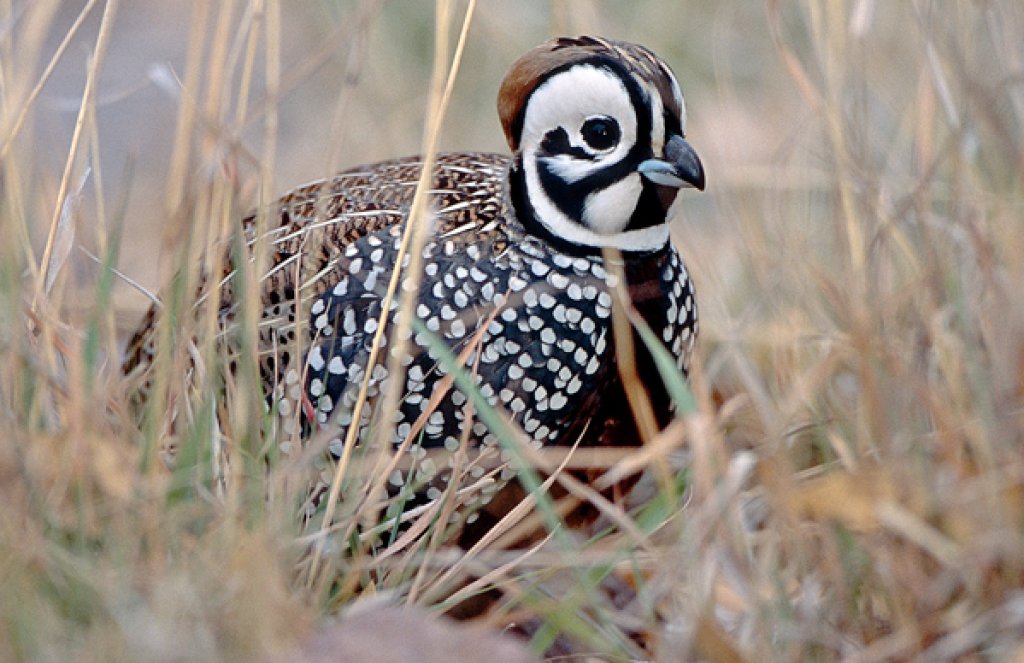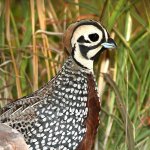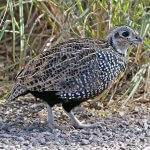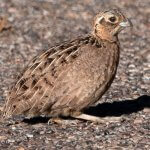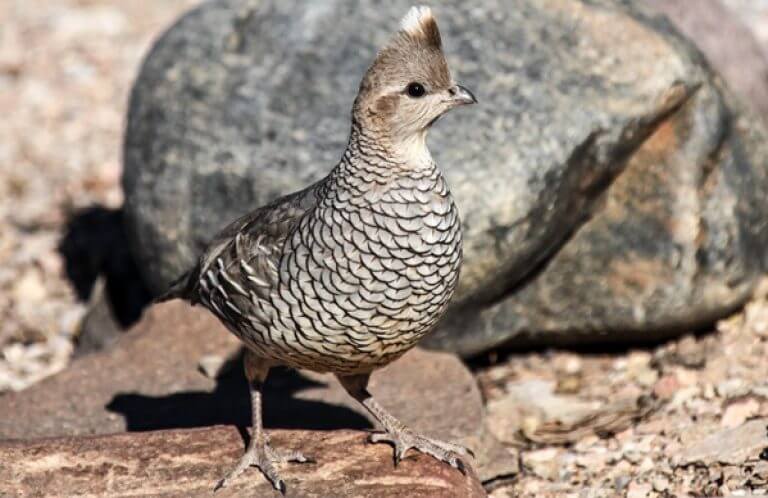About the Montezuma Quail
Many birders visiting the southwestern United States yearn to catch a glimpse of the striking little Montezuma Quail. This plump bird was once called the Harlequin Quail, for the male's pied head pattern.
Despite this gaudy showing of black, white, and a bit of chestnut, this bird is surprisingly difficult to spot, like other native game birds such as the Northern Bobwhite and Scaled Quail. This is thanks to the Montezuma Quail's cryptic body plumage and retiring ways, preferring to sit tight under thick cover when threatened, rather than fly.
Scratching Out a Living
The Montezuma Quail's genus name Cyrtonyx derives from the Greek words kurtus (“bent”) and onux (“claw”). This bird does indeed have long, sickle-shaped claws — each about half the length of its foot — which it uses to dig up both insect prey and plant matter.
Songs and Sounds
Montezuma Quails may be hard to see, but calling males are easily detected. The distinctive territorial call is an eerie-sounding, descending whistle, most often heard during the breeding season.
Breeding and Feeding
Ground Game
Since the Montezuma Quail is so elusive, much information on its biology remains to be described. Like other members of its family, such as the Wild Turkey and Ruffed Grouse, it nests on the ground, ideally within a dense understory of native grasses and plants. The female weaves a well-concealed, covered nest of grass, likely with some assistance from her mate.
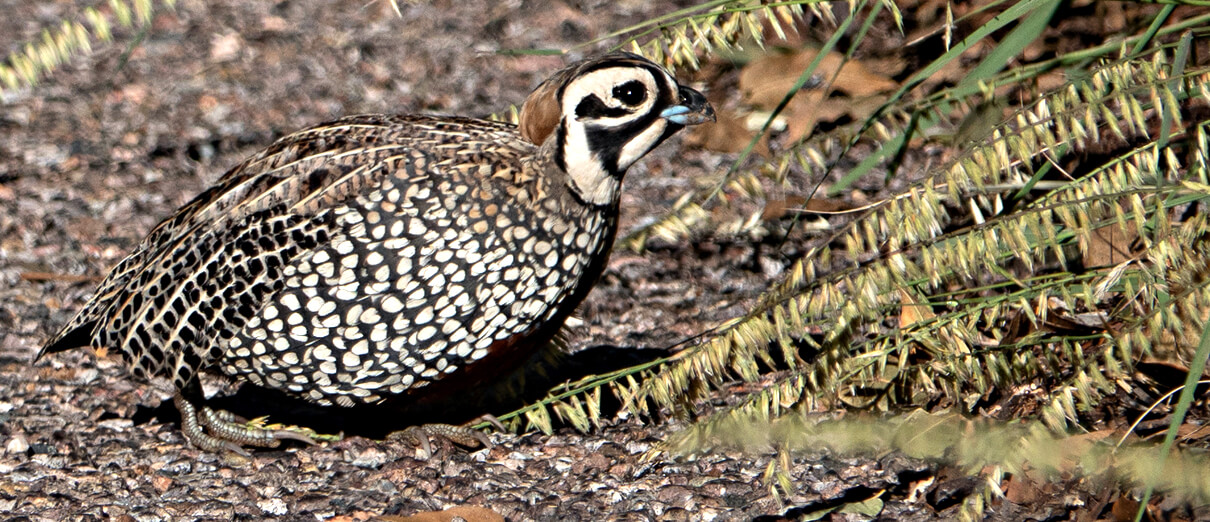
Both parents incubate the clutch, which on average consists of ten eggs, and brood the young for the first few days after they hatch. The precocial young emerge from the eggs with eyes open, and can leave the nest soon after hatching. For about the first week after fledging, the adult quail show their chicks food sources, often digging up items for them. Within a week, the chicks can forage independently. Hatch-year young remain with parents for several more months.
The Montezuma Quail's reproductive success depends on sufficient summer rainfall, which nourishes food plants and the native grasses that provide critical cover for these birds.
Digging and Dining
Like many other game birds, the Montezuma Quail forages entirely on the ground in small groups, known as coveys. Its diet consists primarily of small bulbs and tubers, seeds, grains, and a variety of insects. Montezuma Quail will also consume acorns and other mast when these foods are available. This species is well adapted to desert conditions and if necessary can get sufficient moisture from its diet in lieu of a water source.
This species digs for its dinner with specialized claws, but also kicks through leaf litter to expose prey, in the manner of a Spotted Towhee or White-throated Sparrow. Its serrated lower mandible also allows it to tear vegetation, fruits, and seeds from low shrubs, grasses, and forbs.
Region and Range
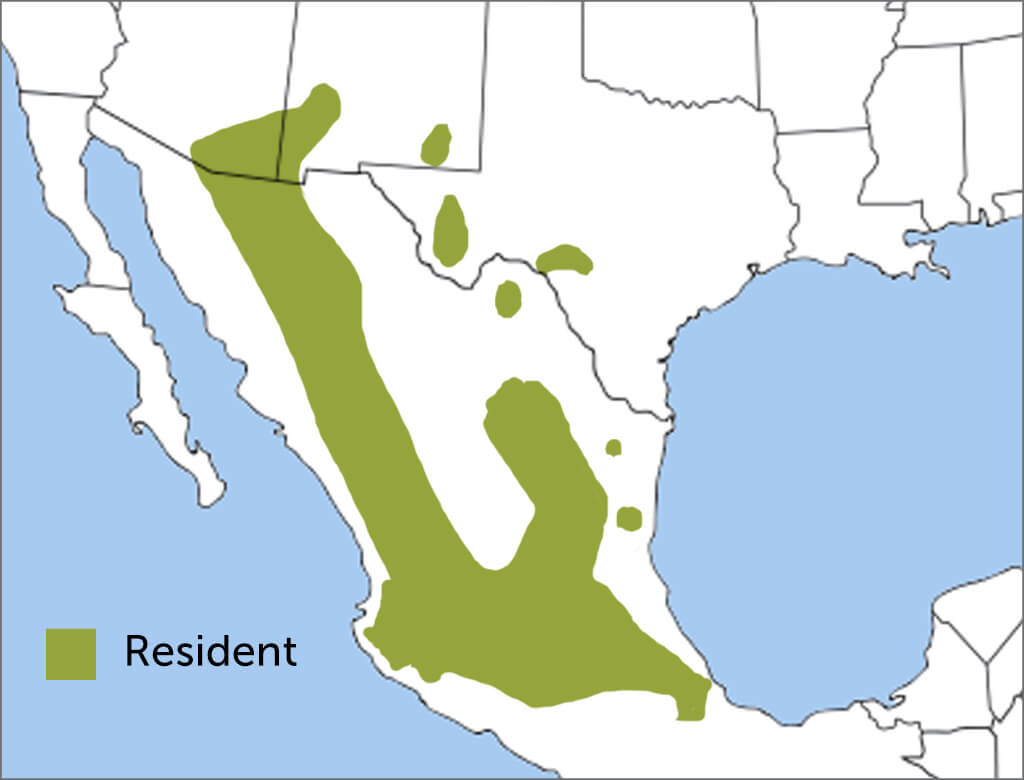
The Montezuma Quail is a resident (nonmigratory) species primarily found in Mexico along the Sierra Madre mountain range. Only about ten percent of the total population occurs in the U.S., in the high-altitude "sky islands" of Arizona, New Mexico, and Texas, also home to other regional specialty birds such as the Elegant Trogon and Red-faced Warbler.
Five Montezuma Quail subspecies are recognized, separated into two groups by males' differing plumage patterns.
Conservation
The biggest threat to the Montezuma Quail is habitat loss due to overgrazing, drought, and human development. Without yearly monsoon rains, Montezuma Quail nesting success may be poor and lead to clutch failure.
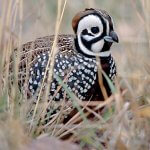
Help support ABC's conservation mission!
Like other birds of the Southwest, including the Elf Owl and Lucy's Warbler, the Montezuma Quail benefits from habitat conservation and restoration on both sides of the U.S. and Mexican border. Conservation of important pine-oak and savanna habitats is needed to stabilize or expand this bird's populations.
Get Involved
Many of the rarest bird species in the Western Hemisphere remain relatively unknown. You can learn more about these birds and the threats they face by signing up for ABC's Bird of the Week email series, which frequently highlights these fascinating birds.
American Bird Conservancy and our partners throughout Latin America and the Caribbean have created and expanded more than 100 bird reserves, which protect upward of 1.1 million acres of vital habitat. Together, we've planted more than 6.8 million trees, helping to restore degraded and damaged habitat. You can help us continue to protect endangered birds by making a gift today.





































